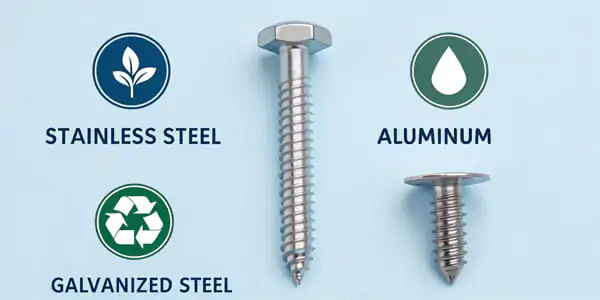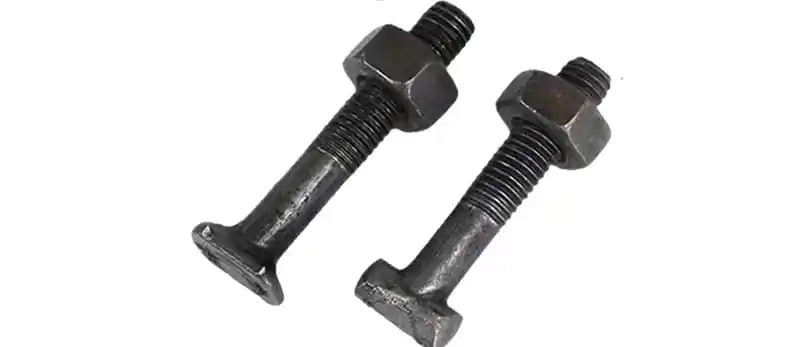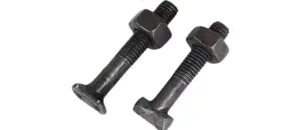Choosing the right anchor bolt is crucial for construction stability. J-type and L-type anchor bolts are both popular choices, but they serve different purposes. J-type bolts are for heavy-duty projects, while L-type bolts work best for lighter applications. Let’s dive into the key differences to help you make the right choice.
The main difference between J-type and L-type anchor bolts is their shape and load-bearing capacity. J-type anchor bolts have a larger load capacity and are typically used in heavy-duty applications such as securing concrete foundations in high-rise buildings and bridges. In contrast, L-type anchor bolts are suited for lighter projects, such as securing lightweight post bases and connecting sill plates to concrete.
Now that we’ve covered the key differences, let’s dive deeper into the applications, advantages, and considerations for choosing between J-type and L-type anchor bolts.
What are L Anchors Used For?
L-type anchor bolts, often referred to as “L-bolts,” are primarily used for lighter applications. These bolts feature a 90-degree bend at the embedded end, which allows them to securely anchor structures like sill plates to concrete or masonry foundations. The L-shape provides excellent resistance against lateral forces, making these bolts ideal for lightweight post bases and small to mid-sized structures such as fences, steel columns, or even some municipal infrastructure projects.
The relatively low load-bearing capacity of L-type bolts makes them less suitable for heavy-duty applications like large buildings or machinery. However, their ease of installation and cost-effectiveness make them a great choice for residential and small-scale commercial projects.
What are J-Shaped Bolts Used For?
On the other hand, J-shaped anchor bolts are designed for more robust applications. The most common use for J bolts is anchoring structural elements like steel or wooden beams to concrete foundations. The unique J-shape, with its curved profile, allows the bolt to secure heavier structures and provide strong resistance to pullout forces.
Because of their larger load-bearing capacity, J bolts are often used in high-stress environments such as high-rise buildings, bridges, and heavy machinery installations. Their primary advantage lies in their durability and strong anchorage, making them essential in heavy-duty construction projects where safety and stability are paramount.
What Type of Anchor is Strongest?
While J-type and L-type anchor bolts are both strong in their respective uses, wedge anchors are generally considered the strongest type of anchor bolt. Wedge anchors provide superior holding power, especially in concrete, due to their unique expansion mechanism.
However, when comparing J-type vs L-type bolts, the J-bolt stands out for heavy-duty applications where high load-bearing capacity is required. L-type bolts, on the other hand, are more suitable for lighter, less demanding structures, and are often used in projects where lower pullout forces are expected.
When Should You Use J-Bolts Over L-Bolts?
Choosing between J-bolts and L-bolts largely depends on the scale and nature of your project. Here are some key factors to consider:
- Heavy-Duty Projects: If you’re working on large-scale construction projects such as bridges, high-rise buildings, or anchoring heavy machinery, J-type anchor bolts are your best bet. Their larger load capacity and greater durability make them ideal for structural stability in demanding environments.
- Lightweight Projects: For smaller-scale applications, such as attaching lightweight posts, sill plates, or small fences, L-type anchor bolts offer an easy-to-install, cost-effective solution.
- Project Duration: If your project is temporary or requires frequent adjustments, L-type bolts are a good choice due to their simpler installation and removal process compared to J-type bolts, which are more permanent once installed in concrete.
Applications of J-Type and L-Type Bolts in Construction Projects
J-Type Bolts
These bolts are indispensable in heavy machinery manufacturing, high-load civil engineering projects, and large infrastructure work, where safety and durability are non-negotiable. J bolts offer excellent resistance to pulling forces and ensure that the foundation of the structure remains intact for years.
L-Type Bolts
L-type bolts are perfect for residential projects, small commercial buildings, and lightweight structural elements. They are commonly used in city infrastructure projects like sidewalks and streetlight poles where the load demand is not as intense but still requires reliable anchorage.
What Can You Use Instead of J-Bolts?
While J-bolts are widely used for heavy-duty applications, there are alternatives depending on the specific needs of the project. Screw anchors, for instance, are a popular alternative for projects where quicker installation is necessary, and the pullout force requirements are lower.
Another option could be post-installed anchor bolts, which allow for flexibility in installation and can be placed after the concrete has set. These are often used in retrofit projects where additional anchorage is needed without disrupting the existing structure.
Conclusion
In conclusion, both J-type and L-type anchor bolts are essential tools in construction, each serving its own unique purpose. J-type bolts are ideal for heavy-duty applications where strong anchorage is required, while L-type bolts are suited for lighter, cost-effective installations. By understanding their differences, you can make the right choice for your project, ensuring both safety and efficiency.









